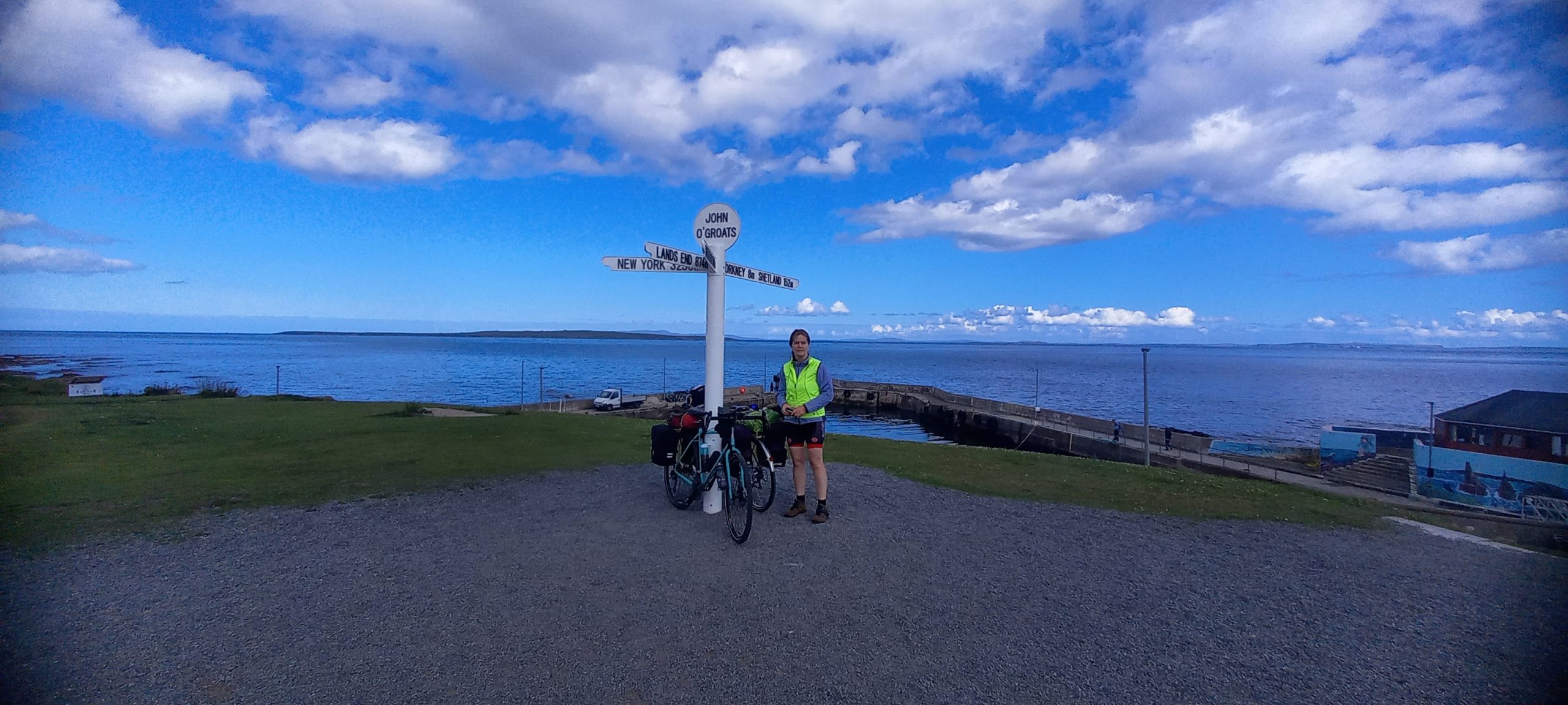
To celebrate reaching State Pension Age on 25th August 2022, we decided to go for a bike ride. It was an amazing experience. Below is my personal summary account of the journey.

is all about excursions in the countryside including caving and digging trips, walks and thoughts.
Simmonds, V. 2014. An overview of the archaeology of Mendip caves and karst. Mendip Cave Register & Archive (MCRA). (currently being revised, 2016)
An overview of the archaeology of Mendip caves and karst is freely available online at www.mendipgeoarch.net and in the archaeology section of the Mendip Cave Register & Archive at www.mcra.org.uk

To celebrate reaching State Pension Age on 25th August 2022, we decided to go for a bike ride. It was an amazing experience. Below is my personal summary account of the journey.

Centred on NGR SX 5476 5377
Published in Descent (285) April/May 2022 pages 34-37
Introduction:
A doline and associated network of cave passages were uncovered during infrastructure works for a major building development at Sherford, near Plymouth, Devon. In late July 2021, the author was asked to undertake a site visit and assessment when it was established that the talus material within the doline and cave passages, contained an important faunal assemblage. There followed several subsequent visits before archaeological/palaeontological investigations were commenced in November 2021.
This summary provides a general description of the cave and some observations on the cave formation processes. The faunal remains are currently undergoing specialist analyses and a separate, full report on the findings are expected to be published in the future.
Geology:
The underlying solid geology consists of Middle Devonian Limestone formed 385 to 398 Ma when the local environment was dominated by shallow carbonate seas in the Devonian Period. In the surrounding area are outcrops of pyroclastic, basaltic, igneous rocks (Middle Devonian Slates) also formed 385 to 398 Ma, these forming in an environment dominated by explosive eruptions of silica-poor magma. Also, in the wider area are superficial deposits consisting alluvial clay, silt, sand, and gravel formed during the Quaternary Period up to 2 Ma, isolated remnants of this material are likely be found locally, possibly filling other sinkholes (BGS online).
The cave:
The open sinkhole, or doline, formed by collapse of the cave roof, is situated on a line of weakness along a fault fracture. From the bottom of the doline, an opening in the south wall leads downslope to gain access into roomy chambers to the east- and west-sides. To the east, a boulder-strewn walking size passage with some fine speleothems trends in a north-easterly direction passing a talus slope with a visible connection to the doline. A 5m climb up at the end leads into lowering passages that close down, eventually becoming too tight, the route is partially blocked by rubble from borehole works. On the southern side of the east chamber, a short climb over large boulders leads into the approximately 45m long south passage passing through a wriggle to The Last Rip. This passage is a mix of stooping, walking, and crawling among and over sharp and jagged boulders, along the way there are some decent calcite formations.
To the west side of the entrance slope, another roomy chamber with boulder-strewn floor, contains a fine white calcite drape in the roof. On the west side of the chamber a crawl, wolf passage, eventually becomes too tight. A small alcove on the northern side leads to a short 4m climb to gain access to a narrow rift, moving forward a couple of metres, followed by a tight climb down a small, decorated chamber is reached. This leads to another boulder floored chamber, on the north-side a 4m climb up through a small opening and climb down into the impressive Izzy’s Big Chamber, approximately 40m long, up to 12m wide and averaging 5m-6m high. This chamber is partitioned by massive boulders essentially into two sections, to the southwest a climb over boulders drops into the airy south-west section where possible cryogenic calcite was noted. The north-east section contains some very nice speleothems especially at the northern extent. A wriggle through one of a number of narrow holes leads to a continuation that soon closes down becoming sediment filled. A north/south rift links to the doline at the southern extent, this was probable another access route before the doline became filled.
Throughout the accessible passages the effects of modern intrusions from piling-works and boreholes are evident in the form of copious dust covering, grout and concrete overspill.
The extensive and complex cave system appears to be of hypogenic origin with the occurrence of later epigenic processes. Hypogenic speleogenesis is the formation of solution-enlarged permeability structures by waters ascending from below in leaky confined conditions, where deeper groundwaters in regional or intermediate flow systems interact with shallower and more local groundwater flow systems. Hypogenic caves are identified in various geological and tectonic settings (Klimchouk, 2009). There are no clear hydrological feeders to the system, later flow appears to originate down fissures. The cave walls show morphologies including semi-isolated chambers separated by lows blind terminations, domed roofs, large wall scallops, wall pockets, pierced partitions, bridges, and stepped wall-facets typical of slow convective currents of air or water. Many of the features are typical of initially isolated voids that have become integrated over time (Smart and McArdle, 2019). Botryoidal speleothems (cave popcorn) are a late phase secondary calcite precipitation which is often but by no means uniquely associated with hypogenic cave systems (Smart and McArdle 2019) are abundant throughout the cave network.
The cave deposits:
The open sinkhole is partially filled with talus (scree) that slopes downwards into the cave system below. It consists of mixed red, grey, and brown silty sandy gravel, cobbles, and boulders, thermoclastic in origin (the product of freeze/thaw processes). Granular material is angular to subangular, some tabular, of limestone. The talus material contains numerous bone fragments from a wide range of species, and within the cave, on the surface of the talus slope can be seen faunal remains. There is noticeable calcite deposition (flowstone) of the talus slope, especially deeper into the cave, and much of the granular material, including bones, has become cemented. Finer sediments below the coarse granular material might contain micro-fauna and human artefacts.
Faunal remains so far recovered and identified include woolly mammoth, wolf, woolly rhinoceros, horse, reindeer and hyaena. The faunal assemblage is suggested to originate from the Middle Devensian (MIS 3) period, c.60 to 20ka (Schreve, pers comm). At this time Homo sp. return to Britain. Pin Hole, Creswell Crags in Derbyshire is the defining locality for the Stage 3 faunal grouping. The Pin Hole mammal assemblage-zone (50 – 38 ka) includes woolly mammoth, woolly rhinoceros, wolf and bovid, as well as mountain hare, red-cheeked suslik, red fox, brown bear, stoat, polecat, spotted hyaena, lion, wild horse, giant deer, and reindeer. Humans are represented as part of the of the Pin Hole mammal assemblage-zone by skeletal material at Kent’s Cavern and Paviland and by artefacts of Middle and Early Upper Palaeolithic types at more than thirty other localities (Currant & Jacobi, 2001). Similar faunal assemblages have been identified to the west of Sherford Cave at Cattedown Caves, Plymouth (LEN 1021406) and south-east at Kitley Caves near Yealmpton (Freeman, 2015).
Evidence for the effects of Pleistocene frost and /or ice.
During the Pleistocene period, interglacial and warmer interstadial periods allowed the precipitation of calcite carbonate (CaCO3), resulting in speleothem (including stalagmites, stalactites, and flowstone) growth within caves in the region generally. The following glacial or stadial periods may have resulted in periglacial activity in the cave, during which the calcite layers became fractured by freeze /thaw processes. The term ‘periglacial’ is widely used to refer to those regions where frost action constitutes the dominant geomorphological process. Cyclic freeze-thaw activity, the growth of ground ice, and the presence in many (but not all) periglacial environments of permanently frozen ground, permafrost, leads to the development of a suite of highly distinctive deposits, sedimentary structures, and landforms. It has been suggested that permafrost in caves might have reached considerable depth, consequently forming an ice plug. During the following interglacials, thawing might occur to a lesser depth. Effectively the cave would be ‘plugged,’ causing meltwater to ‘pond’ or outflow. During the build-up of ice, as it freezes ice swells, during subsequent thawing episodes, the melting ice might flow and slide, thereby causing stalactites and curtains to be sheared off the roof and stalagmites tipped over or sheared off their bases and displaced. Lumps of calcite enclosed in ice can be deposited on inclined surfaces or be left in precarious positions which would not be stable if deposited by falling, for example, during earth movements (Simmonds, 2019). Some of these fractured, displaced, and redeposited speleothems can become cemented during later precipitation periods. Izzy’s Big Chamber contained several deposits of possible cryogenic calcite and samples of these were taken as well as reference speleothem samples.
Sources consulted:
British Geological Survey (BGS) Geology of Britain viewer: Accessed 22nd August 2021 https://mapapps.bgs.ac.uk/geologyofbritain/home.html
Currant, A. and Jacobi, R. 2001. A formal mammalian biostratigraphy for the Late Pleistocene of Britain. Quaternary Science Reviews 20 (2001) 1707-1716
Freeman, J. 2015. William Buckland’s connections to the last surviving Pleistocene collections from Yealm Bridge Caverns, Devon. The Geological Curator, Volume 10, No. 4 147-158
Klimchouk, A. 2009. Morphogenesis of hypogenic caves. Geomorphology 106 (2009) 100-117
Schreve, D. Head of Department and Professor of Quaternary Science, Royal Holloway University of London. Editor of Quaternary Science Reviews. Personal communications, August 2021
Simmonds, V. 2019. Evidence for Pleistocene frost and ice damage of speleothems in Hallowe’en Rift, Mendip Hills, Somerset, UK. Cave and Karst Science, Vol.46, No.2, p74-78. Transactions of the British Cave Research Association
Smart, P.L. and McArdle, S. 2019. Geomorphology of Denny’s Hole and associated caves, Crook Peak, West Mendip: A newly recognised hypogene cave complex. Proceedings of the University of Bristol Spelaeological Society, Vol.28, No.1, p65-102

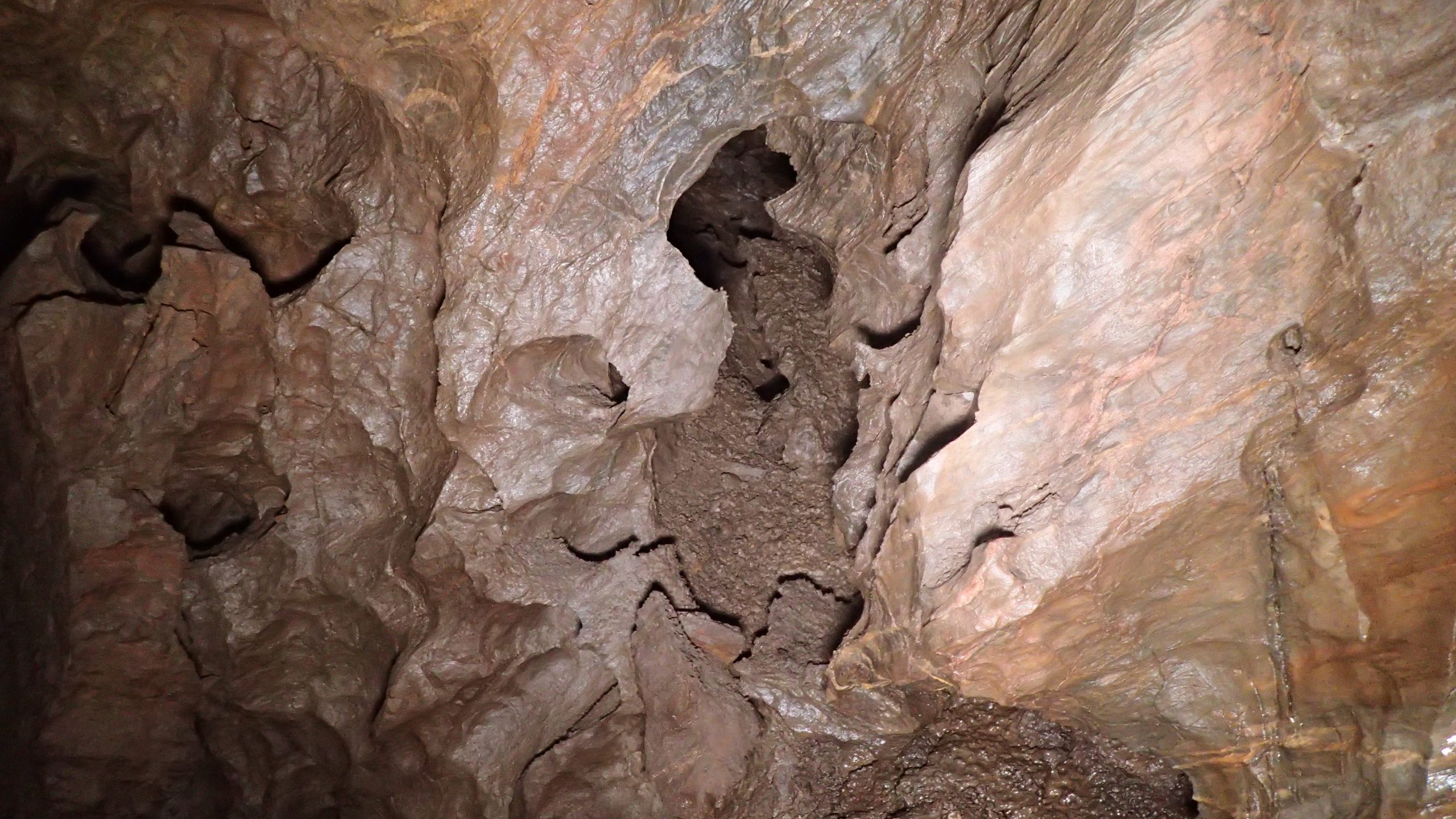
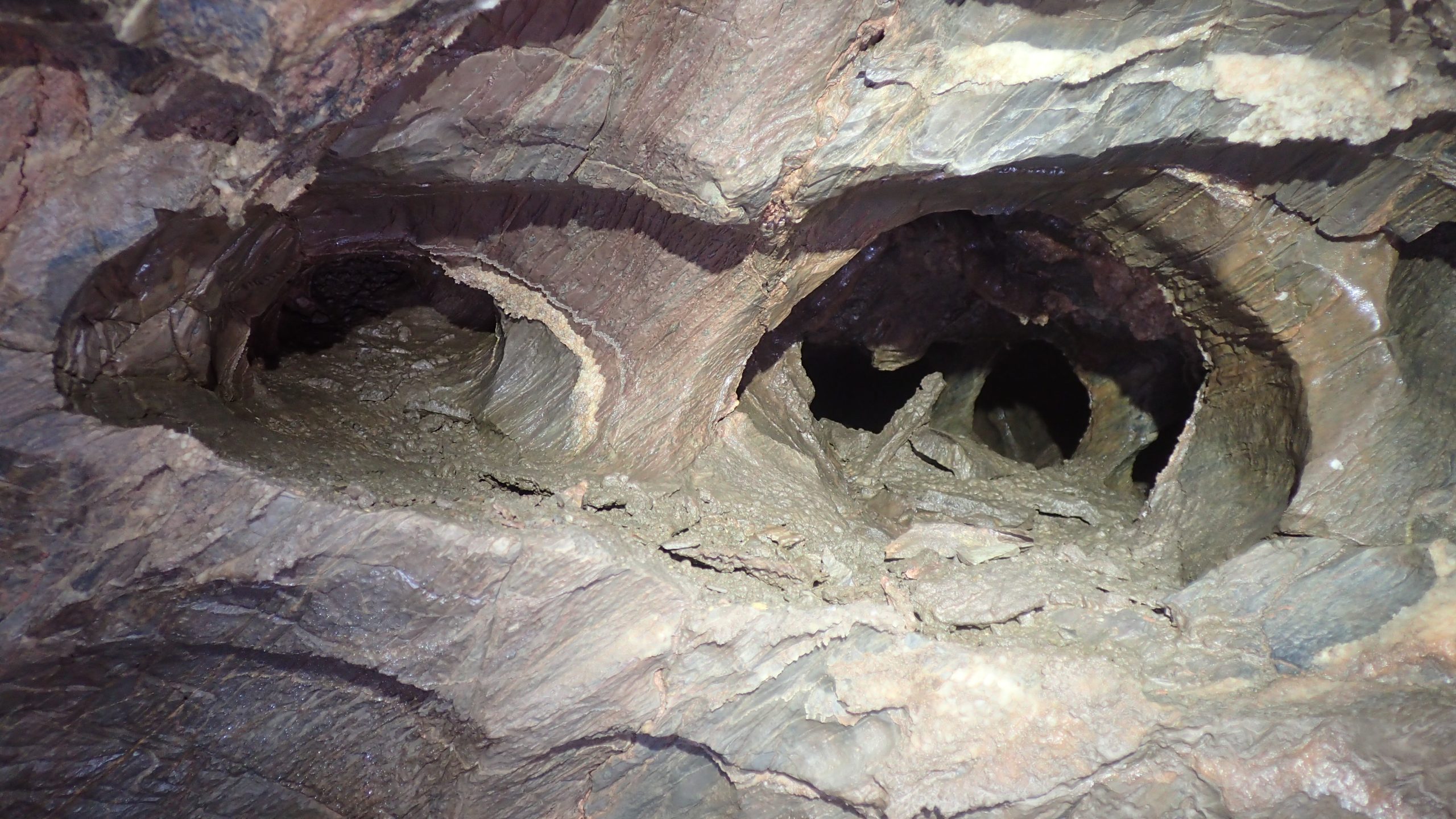
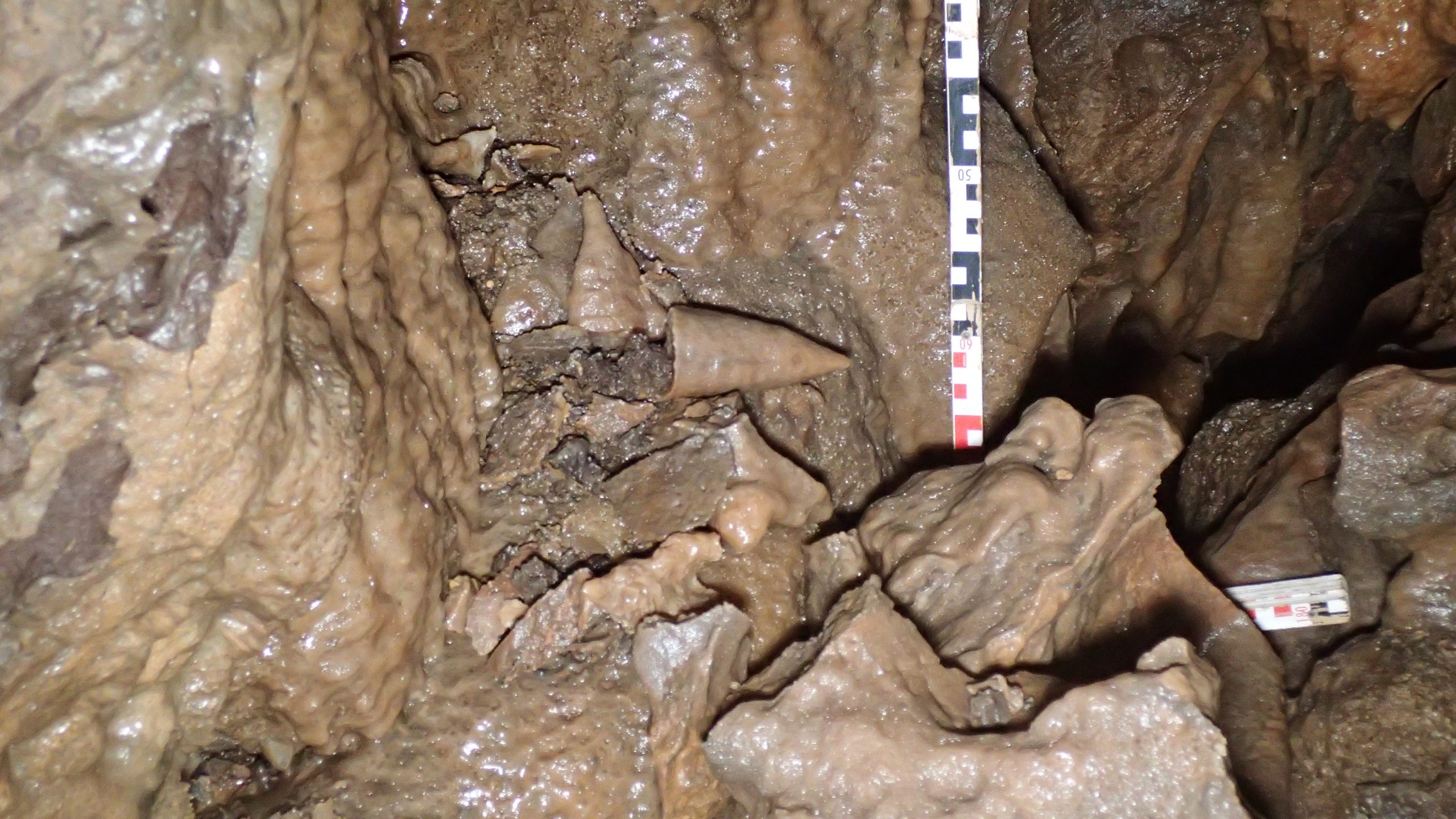
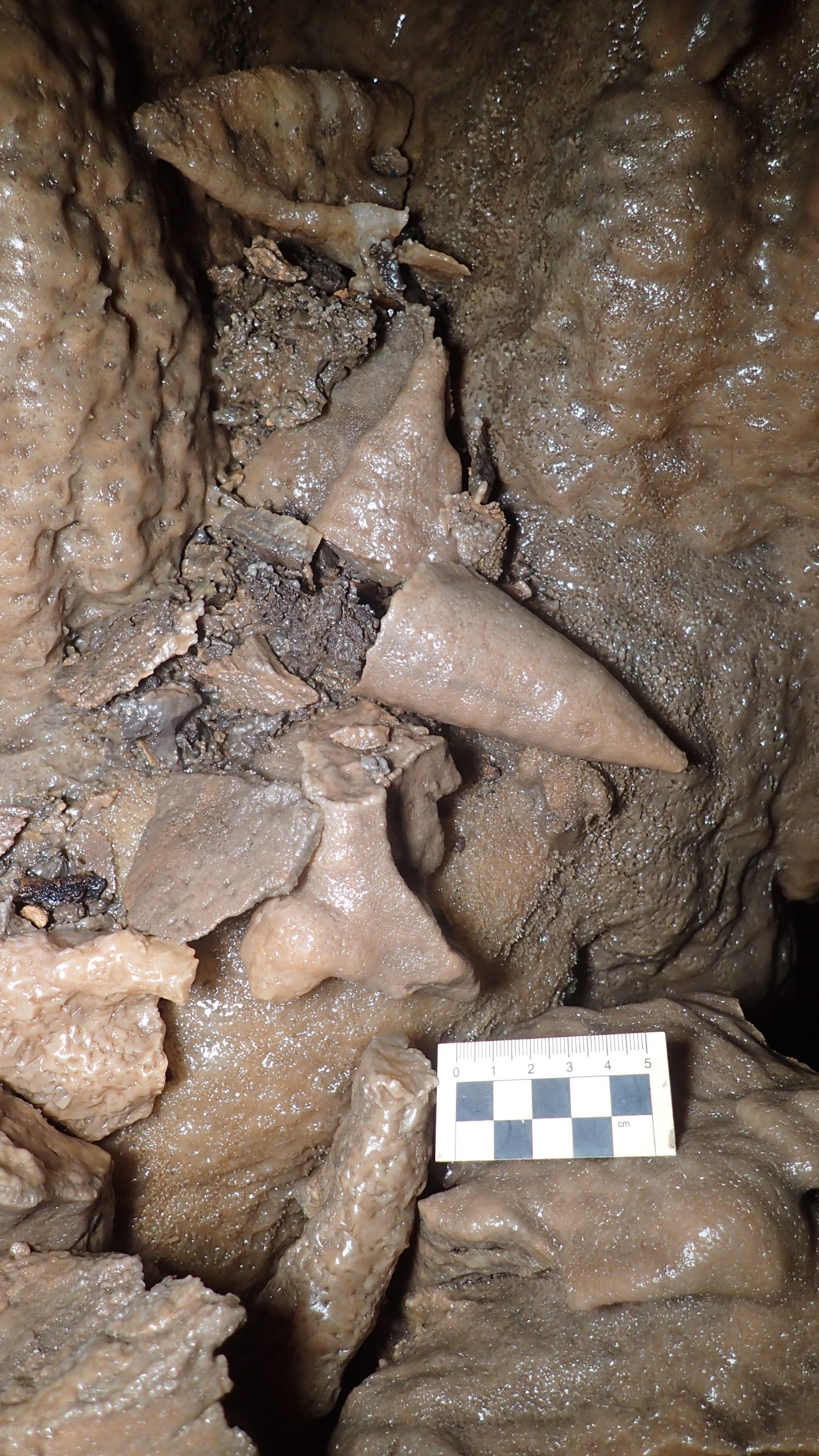

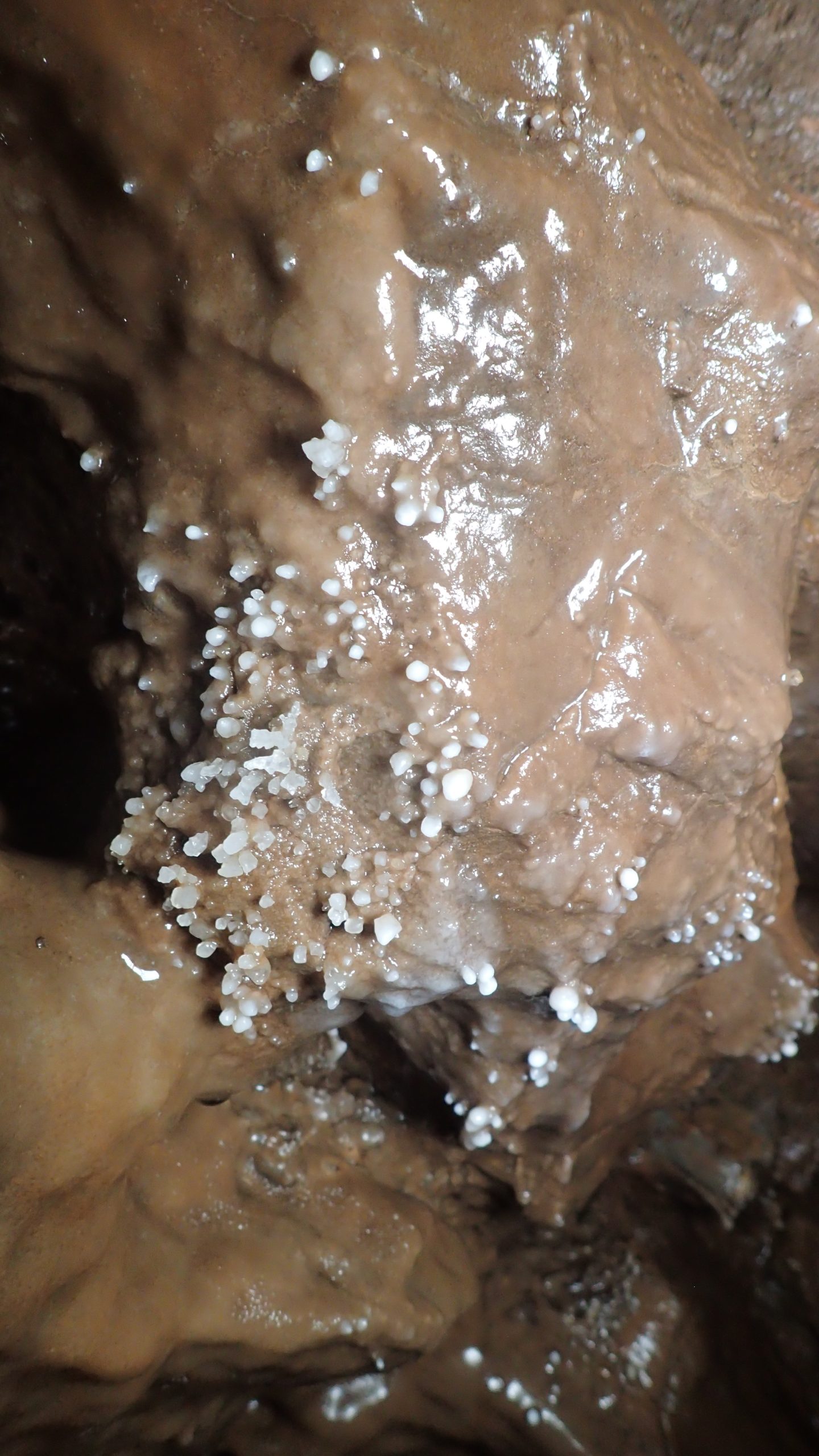
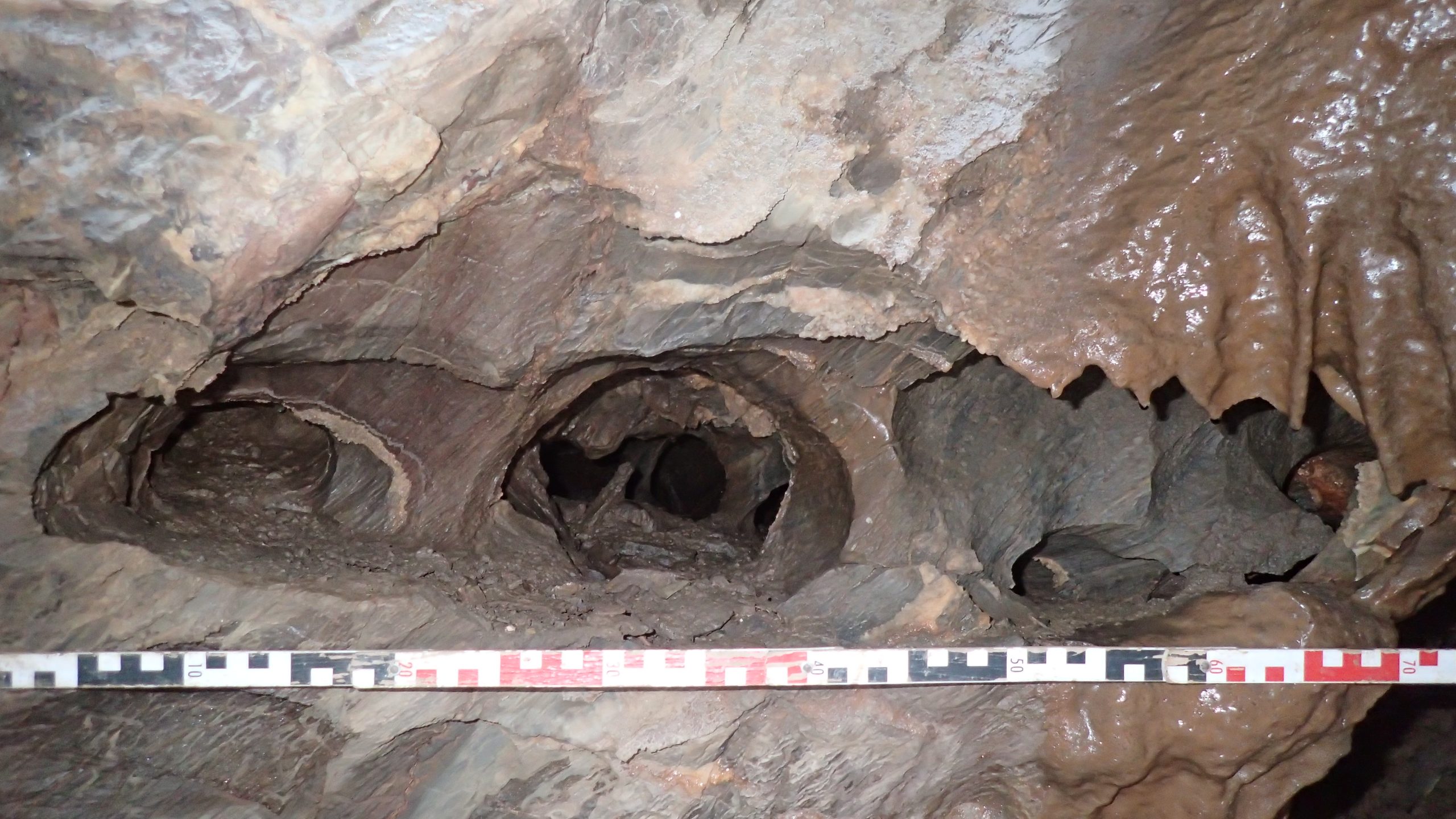
The recently discovered Sherford Cave appears to be hypogenic in origin with later epigenic processes evident. There is also evidence for the effects of Pleistocene frost and ice freeze/thaw processes throughout the extensive and complex network of cave passages. The cave and doline entrance is partially filled by talus (scree) material containing a Devensian (MIS 3) faunal assemblage that includes woolly mammoth, woolly rhinoceros, wolf, hyaena, horse, and reindeer. The faunal assemblage is undergoing specialist analyses.

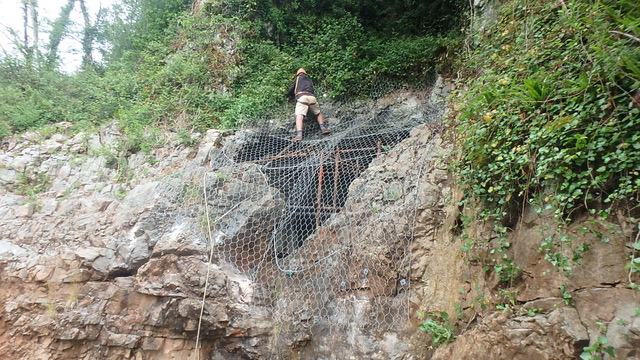
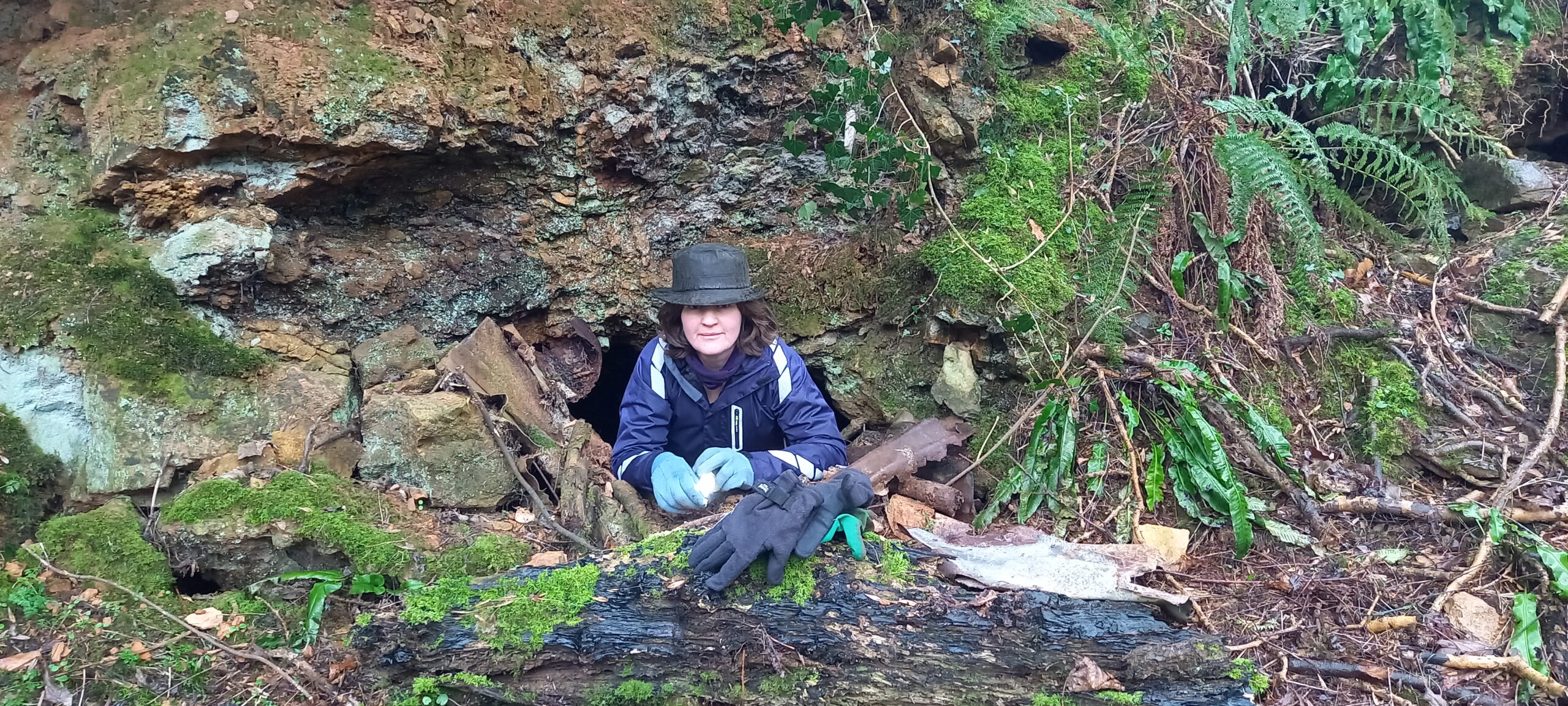
Valentines day walk to visit some local small mines near East Harptree, Mendip. Probably driven for barite.
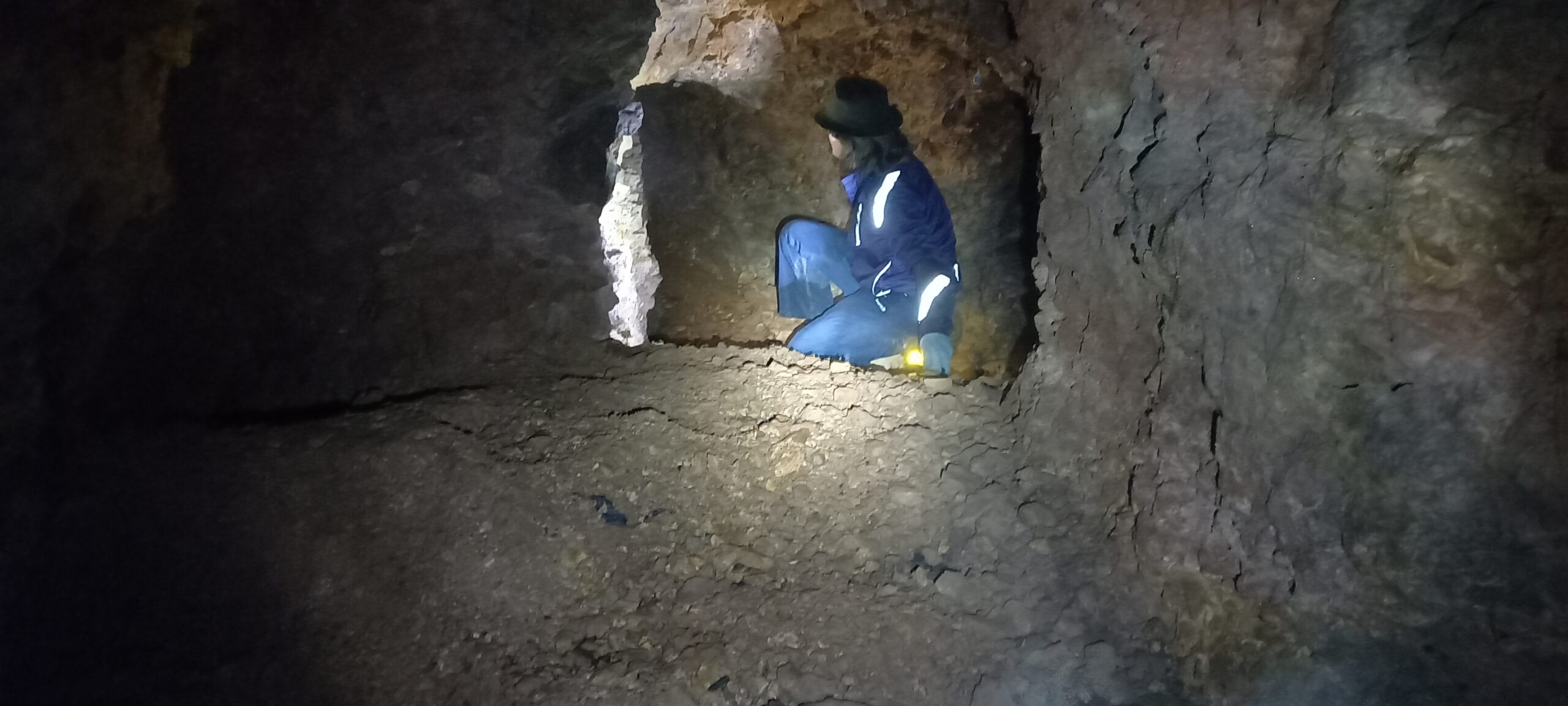
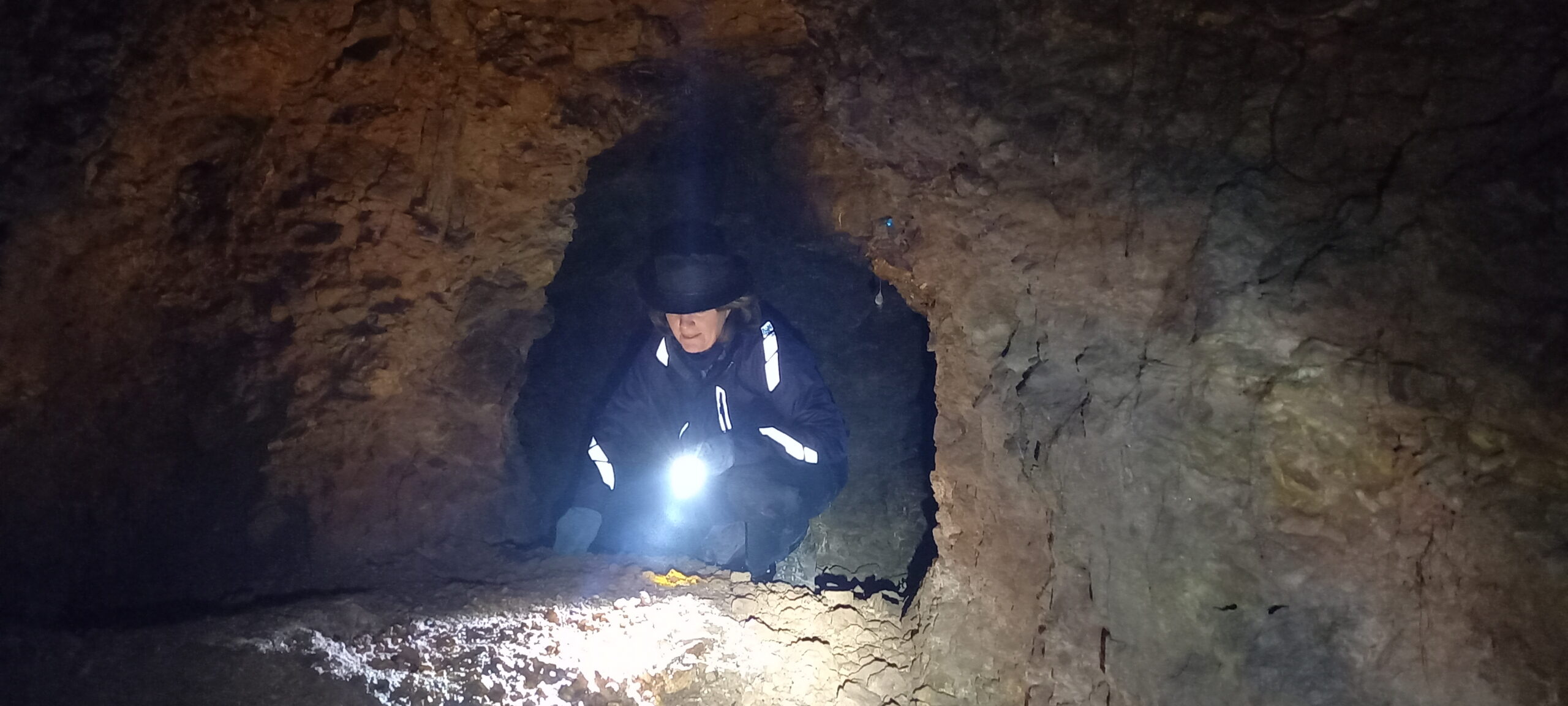
Last trip to Harry Thomas Cave this season, closing for bats.
Saturday: I had sorted most of my stuff out yesterday afternoon, just the final few things to pack and load and I was ready to set-off. The weather forecast wasn’t great for today and the drive west to Gower is going to be miserable. At least I’ll have the rugby to listen to most of the way. Left home at 08:05. Very wet and windy along the M4 and the rugby turned out to be very disappointing. The torrential rain resulted in flooded roads on Gower, some deep puddles to negotiate, and progress was much slower than expected. Arrived at Overton at 10:40, John was waiting.
A soggy walk along the coast path to Harry Thomas Cave. I kept my wet weather gear on to go underground, it was a cheap set I had purchased for just this sort of occasion. While I was sorting out the hauling system Danny McCarroll turned up, so a good team today. Danny took the first hauling stint on the surface and had brought along an umbrella to keep the rain off too, good forward planning. I was on the lower platform loading bags into the bucket, John carried a few bags up from the end chamber before returning to the surface to move bags along to the end of the path where they could be emptied later. We stopped for a bite to eat and drinks and then swapped around. My turn to haul out. Stone first, these were stacked neatly in the entrance, and then more bags. John disappeared for a short time to photograph surface run-off streams flowing into a sinkhole higher up the slade. When the lower platform was cleared Danny moved up to the next one and that was cleared. By now John was very wet and he hadn’t put any leggings on, the rain hadn’t stopped all day. It was close to 16:00, light was already fading, we were all damp. The last action of the day was to return underground to the end chamber to compare UV lights. I had recently bought a 365nm UV light and John had his 395nm UV [black] light. The difference was noticeable: non-flourescent material shows blue with 395nm, a more natural colour is obtained using 365nm. Interestingly, exposed fluorescent material under 365nm UV light showed a significant after-glow. Obviously, some more experimentation needs to be carried out. It was time to pack up and leave, the cold was beginning to set in, the cave was secured, and we made our way back to Overton.
John and I went to the Ship Inn for supper, Danny declined and went home to dry out and warm up. After eating john and I parted company and I headed up to Cefn Bryn for a nights ‘vamping’. It was wet and windy through the night. There were no other vans on the hill!
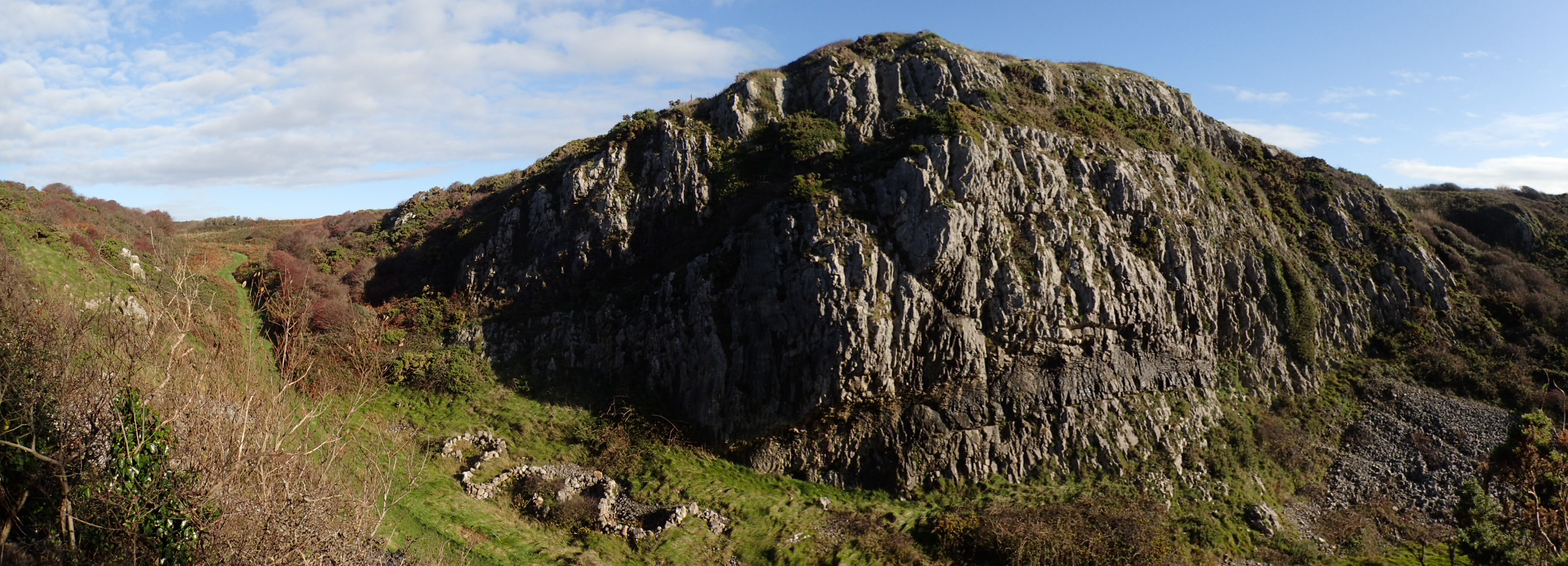
Sunday: A wet and very windy night. I was disturbed by a vehicle in the early hours sounded like it was stuck in the mud. I went back to sleep.
I arose c.07:00, the wind had eased, and the rain stopped, there was even some sunshine to greet the day, a chilly breeze though. Hung my wet gear out to dry, packed away sleeping bags and got the water on for coffee, a wash, then breakfast.
There had been substantial dripping of water in Harry Thomas Cave yesterday and planned to wear wet weather gear over the cotton boiler suit today. Hopefully, will spend more time underground today, we’ll see.
A comfort break in Port Eynon, then up the hill to Overton to meet John at 09:30. Many of the puddles along the track yesterday have dried/drained away and the sun was still shining, blue sky too. At the cave we were quickly underground, John went down to the end chamber to do some recording while I set about de-rigging the hauling system, the ropes coiled and suspended from the back of the ladders, all the metalwork will go back to John’s to be cleaned and dried. I went down to join John in the end chamber. moved a few bags around, exposed more faunal remains, experimented with UV lighting and took some photographs. All done, sample bags filled with bones and sediment were transported out of the cave in buckets along with some more delicate items that were not to be left in the cave over the winter period. The faunal remains were re-packaged into a box to be carried back to Overton later in the day. Scaffold tubes and acrow’s that had been left on the surface were moved close to the cave entrance and will be covered over later in the week. Rucksacks were packed with equipment, samples boxed, the cave secured, and all was ready to go. The sun was still shining, and it was a warm walk back to Overton.
Back at the vehicles I decanted my rucksack into John’s car, then back to the van to pack away my own kit. A brief discussion with John before setting off for home at c.13:50. I was a bit tense, the clutch on the van was playing up making it difficult to select gears, probably a consequence of driving through the deep puddles yesterday. However, by the time I got back home it seemed fine. Hopefully, all dried out now.
With Alex Gee and John Cooper.
I decided against a nights ‘vamping’ up on Cefn Bryn and opted to drive over early on Sunday morning, so set the alarm for 05:00 am. Most of my kit had been packed the day before so just needed to pick-up the rucksack and go. Still, I didn’t get away until 07:15 am. Horrible driving conditions along the M4, heavy rain and lots of spray, thankful that there weren’t too many lorries on the road. Arrived at Overton at 09:35 am, John was already there and waiting, Alex had just arrived, we waited around a short time to see if David Hughes was going to show-up, he didn’t so we set-off along the path to Harry Thomas Cave.
At the cave entrance we quickly changed, and all went underground to assess today’s plan of action. There was plenty of stuff to shift, so the hauling lines were tensioned, Alex went up to the surface and began pulling up the loaded bucket. John was on the lower platform loading the filled bags into the bucket. I spent a short time in the end chamber and took a few photographs experimenting with UV illumination. Not sure the results are brilliant, will have to see and think about it later. I packed the kit away and started to move more filled bags up on to the platform ready to be hauled out of the cave.
After a while Alex called down for some help, the available stacking space was fast becoming crowded, so I went to the surface to move bags from the entrance along the path, even managed to empty a few. There came a natural pause and we stopped for a quick bite to eat.
All change, Alex went underground, and I stayed on the surface to haul the loaded bucket. About 13:30 we stopped hauling, the underground tidied things up, the tension on the haul lines relaxed and the last job was to empty the bags along the path visible to passers-by. All emptied, changed and on our way back to Overton just after 14:00. Back at the vehicles a brief chinwag and I was on my way home at 14:40. The rain had stopped, and it had turned into a pleasant afternoon. A steady uneventful journey home. I had decided to restrict my speed to c.60mph (max.) actually, it was less stressful and probably more environmentally friendly. Arrived home just after 17:00 pm. A fine day.
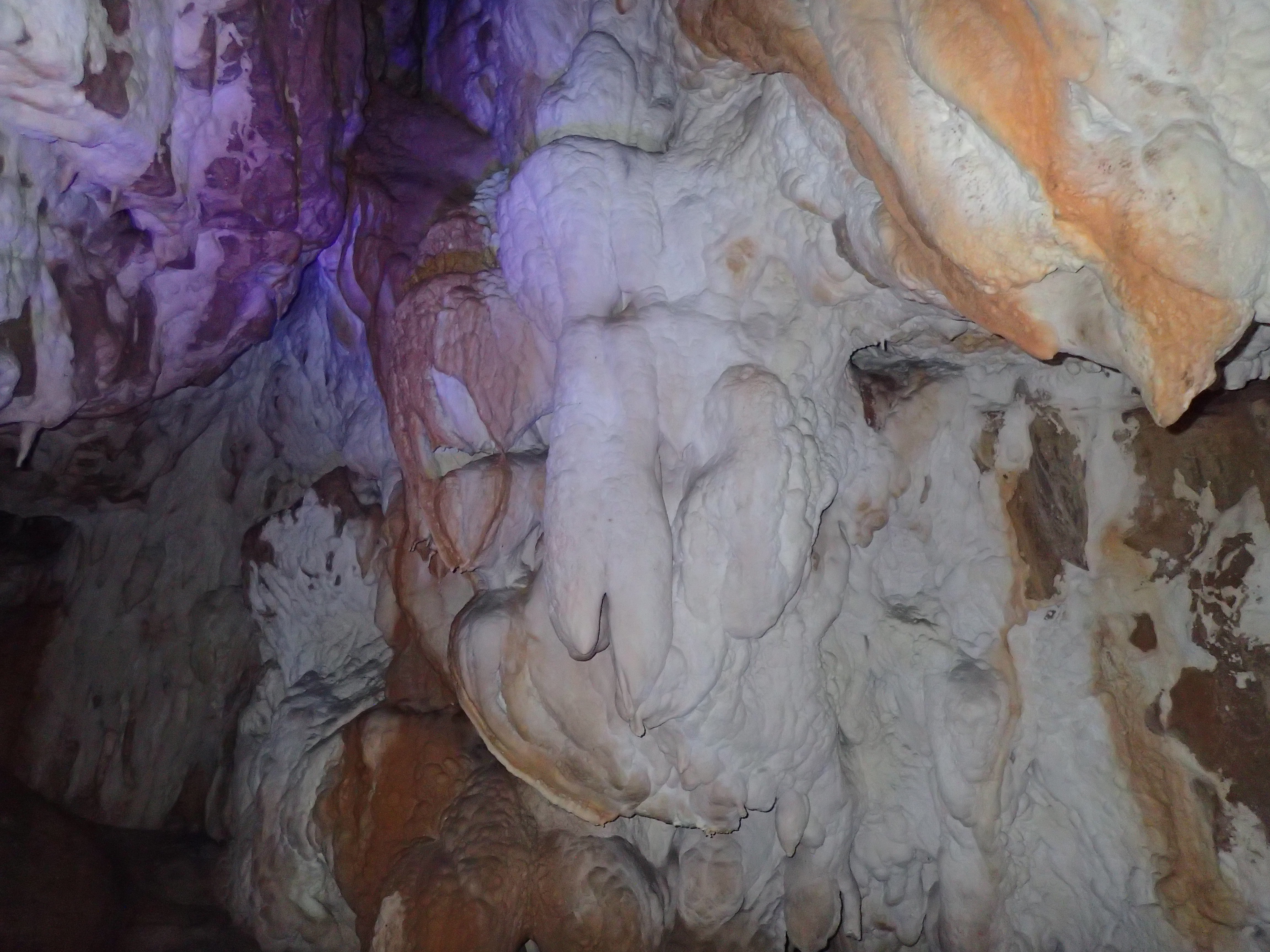

15th September 2019
Saturday evening: I decided to drive over to Gower this evening rather than Sunday morning. After ‘phaffing’ around too much it was after 18:00 by the time I was on my way. There was an amazing sunset as I drove west and a big harvest moon had risen when I arrived at Cefn Bryn, about 21:00. There were several vans already parked, I found a good spot and joined them for the night.
Sunday: The main reasons for driving over yesterday were, this morning, fulfilled – I’ve had a little ‘vamping’ fix and a peaceful, relaxed morning after a good nights rest. The sun was shining but I was thankful for having my down jacked. Fresh coffee, samosa, bhaji and vegetable spring roll for breakfast before setting off to Overton to meet John at 09:30. Stopped briefly in Port Eynon to use the facilities there. Looked at the sea and thought to myself “wish I had my swim shorts”, it was high tide and like a mill pond.
John was already at Overton and we were soon on the walk to Harry Thomas Cave. At the cave we went to the final ‘chamber’ at the current end and John gave a run-down of the latest progress. John has dug a pit to recover more animal remains and there were still plenty more to excavate. I had brought along a 100 LEDs UV flashlight (395nm wavelength), we turned off all the other lights and illuminated the finely decorated chamber with UV. The effect was even more dramatic than I had anticipated, revealing differences in fluorescence in the speleothems and the more recent moonmilk. Unfortunately, I had forgotten my camera, we will have to repeat and record the process next visit.
I returned to the surface, sorting out the haul lines on the way up. With the hauling system ready all the rocks stacked on the platform were loaded into the bucket and pulled up to the entrance. The rocks cleared I suggested we clear some of the bags, but John was determined to excavate some more. I returned underground and we picked over the cobbles and boulders to recover a variety of animal bones in variable states of preservation, including bovid, cervid, canid, lagomorph, rodent and avian. A mixed assemblage to be dried, cleaned and sorted.
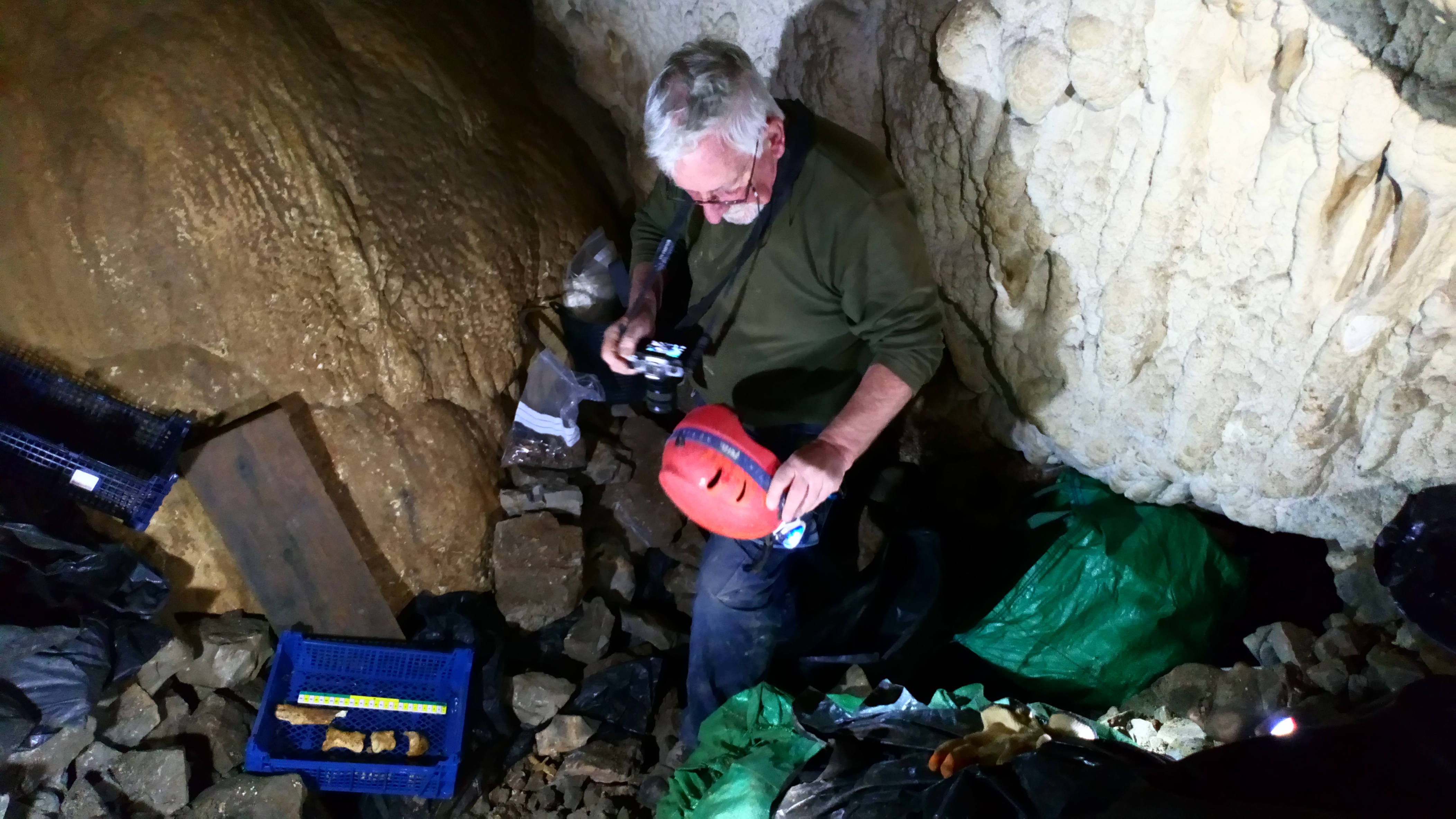
We recovered dog skull number 40 and there is every possibility that more will be revealed as excavation continues. Could really do with another spoil shifting session to remove a bulk of the cobbles and boulders. Time flies when you are busy and enjoying yourselves and before we knew it, time to pack things away and make our way home.
The bones were sorted into trays and I carefully carried them up to the surface where they were wrapped in cling film to be transported back to Overton where the vehicles were parked.
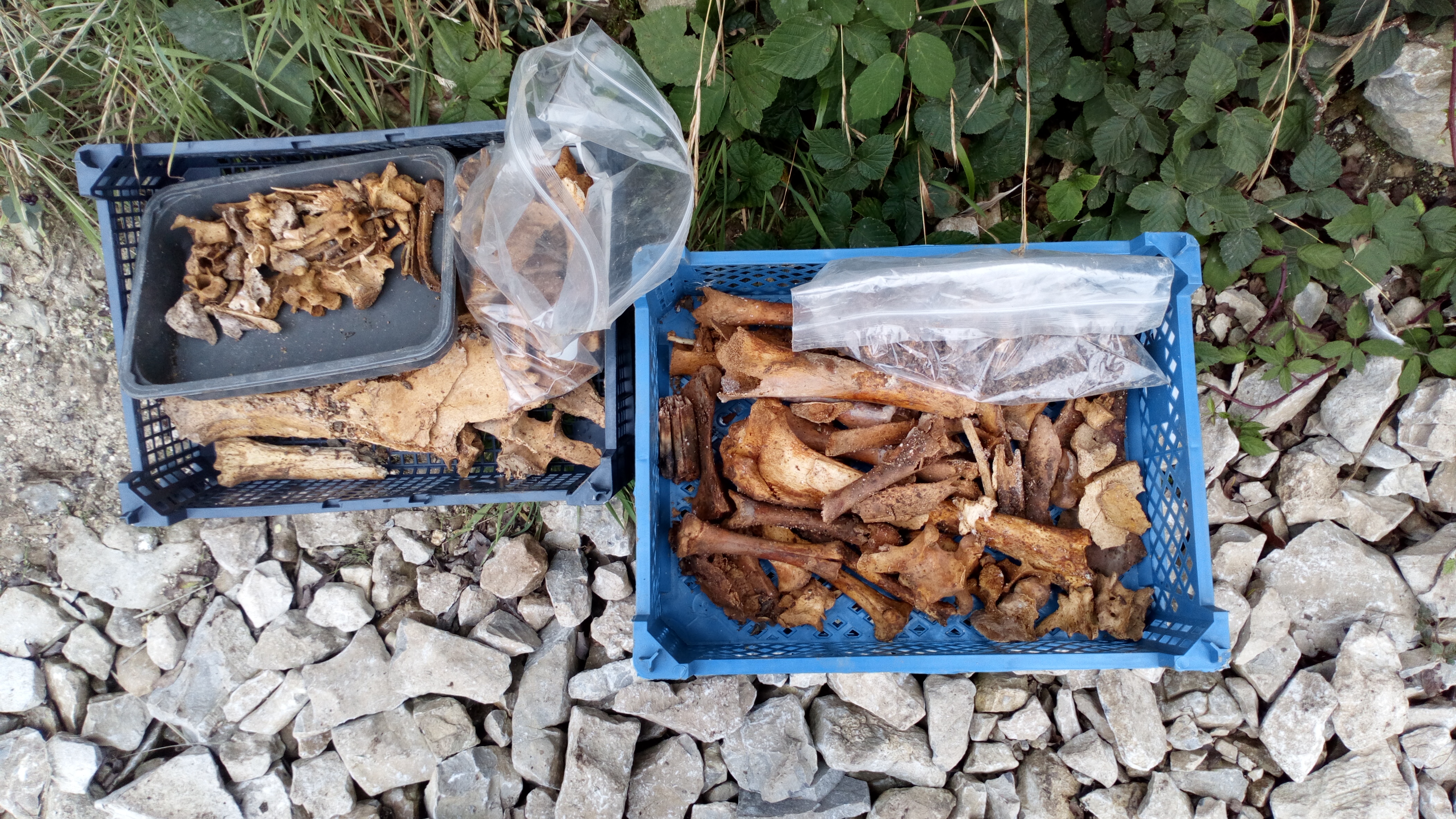
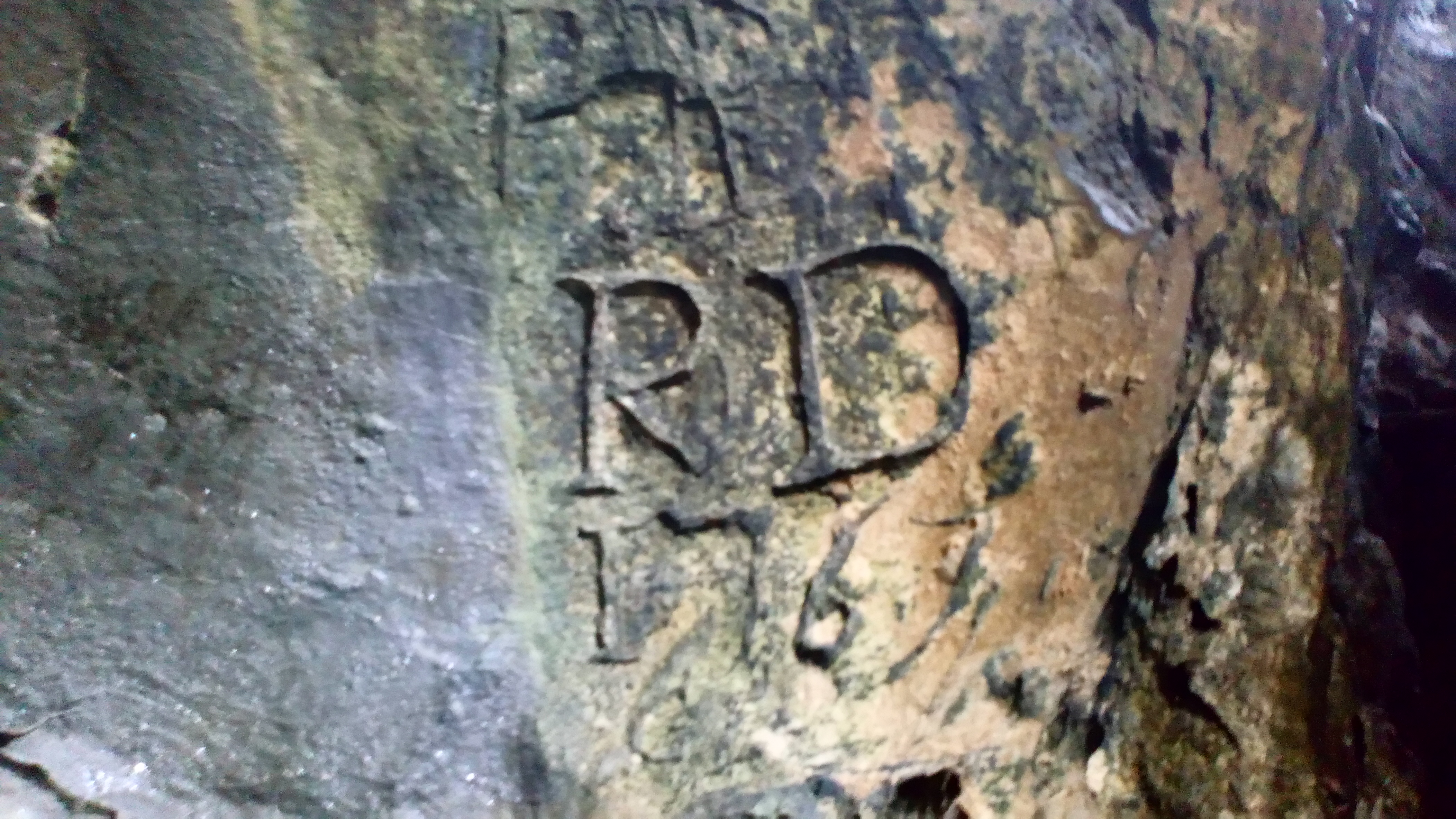

Spent the day on Gower. In the morning helping John Cooper and David Hughes at the cave excavation, the afternoon at Paviland Cave and other caves.
13th to 14th July 2019
Saturday: Walked the dog, then sorted kit and loaded van, coffee, breakfast and, eventually, on the road to Gower c.08:15. I had left at 08:00 but forgot something and turned back. Arrived at Overton just after 10:30, bit of traffic congestion in Parkmill, got stuck behind a coach. John was waiting.
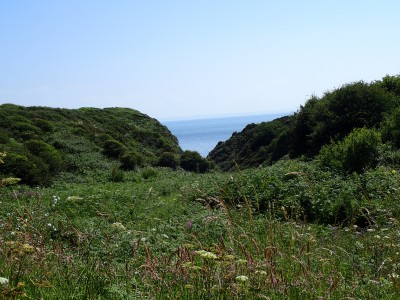
Looking down the slade.
We chatted while I got my kit sorted then, laden, a stroll along the coast path to the slade and Harry Thomas Cave. At the cave got changed and went underground to take a quick look at the recent progress and to assess what needed to be done to construct the next platform, the main project for this weekend. It was obvious that there was plenty of clearing to be done before any construction work could be started. I returned to the surface, set-up the haul line and pulled the loaded bucket up from the depths, John stayed below and loaded the bucket with bags and stones. There were some breaks while John broke-up some larger rocks, I took the opportunity to take the bags along the path and empty them onto the “scree” slope, I also managed to clear the last of the bags that had previously been dumped along the path. I returned to the cave entrance to haul more bags and stones, then, Danny McCarroll turned up to lend a hand.
When the bags and rocks were cleared from the proposed platform area I went back underground with Danny and together we got to work constructing the platform. Some new ‘acrow bars’ had been purchased and one of these was bolted into place, after a little bit of rock engineering. A second acrow was fixed and scaffold bars attached to make a firm base. Scaffold boards were cut to size to form the platform. Time had passed quickly, it was 17:00 and we decided to call it a day, the last few boards would wait until tomorrow. We packed up and departed the cave.
John and I went to the Ship Inn, Port Eynon for a beer, Danny had to get away so couldn’t join us. After a couple of beers, a fish and chip supper for me, then up to Cefn Bryn to park up for a night’s “vamping”. A chance to try out the extra layer of ‘karrimat’ inserted into the van. Time to write up the day’s events too. It had brightened up a bit but was still a bit chilly, breezy as well.
Sunday: I enjoy these peaceful “vamping” weekends. a decent night’s rest and awoke to a pleasant morning. Coffee brewed, an omelette for breakfast, reading Aldhouse-Green, et. al. 2000. Paviland Cave report and writing in the diary. I had arranged to meet John at c.09:30, after a brief stop in Port Eynon drove to Overton.
Today at Harry Thomas Cave, the platform was completed, boards cut to size and secured, the ladders re-jigged and the job was “a good-un”. We then had another hauling session, clearing bags and rocks from the current end chamber. Initially, the bags were carried up the short ladder and stacked on the newly completed platform before I went up to the surface to haul them out of the cave, john loaded the bucket. It was warm and sunny on the surface.
John then suggested I might lift the “horse” skull recently found to one side of the end chamber, so we returned underground. In the chamber I cleared some loose stones from around the skull and to make access a little easier – it didn’t look like a horse skull to me – took some photographs, also noted another dog skull and other remains. The skull was in fair condition and almost complete, it was easy to lift – it was obviously a sheep, John wasn’t so interested with it after that.

The skull.
By now it was time to start packing things away and exit the cave, there was some discussion regarding various aspects of the end chamber. I picked up my drill bag on the way out of the cave. The cave secured, we departed. A brief chat at Overton before parting company.

A visitor to the cave.
I was heading along the heads of the Valleys road (A465) to the Lamb and Fox, Pwll Ddu to a wake for Brian Lewis, the former landlord. 25 years ago, during the heady days of discovery in Ogof Draenen, Brian and Carol had been very good to us. Met up with several old friends and raised a glass to Brian.
28th to 30th June 2019: BCRA Field Meeting – North Pennines.
A summary of a weekend exploring the Hypogenic Caves of the North Pennines in the UNESCO Global Geopark, at a joint meeting of British Cave Research Association (BCRA) and The North Pennines UNESCO Global Geopark (NPUGG).


Exploring Hudgill Burn Mine Cave.
17th to 20th June 2019: Archaeology, Geology and Speleology! An account of a few day’s spent on the Burren, County Clare in the west of Ireland.


The Cliffs of Moher.